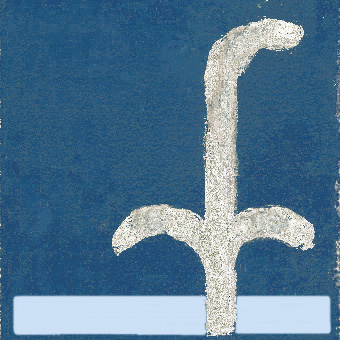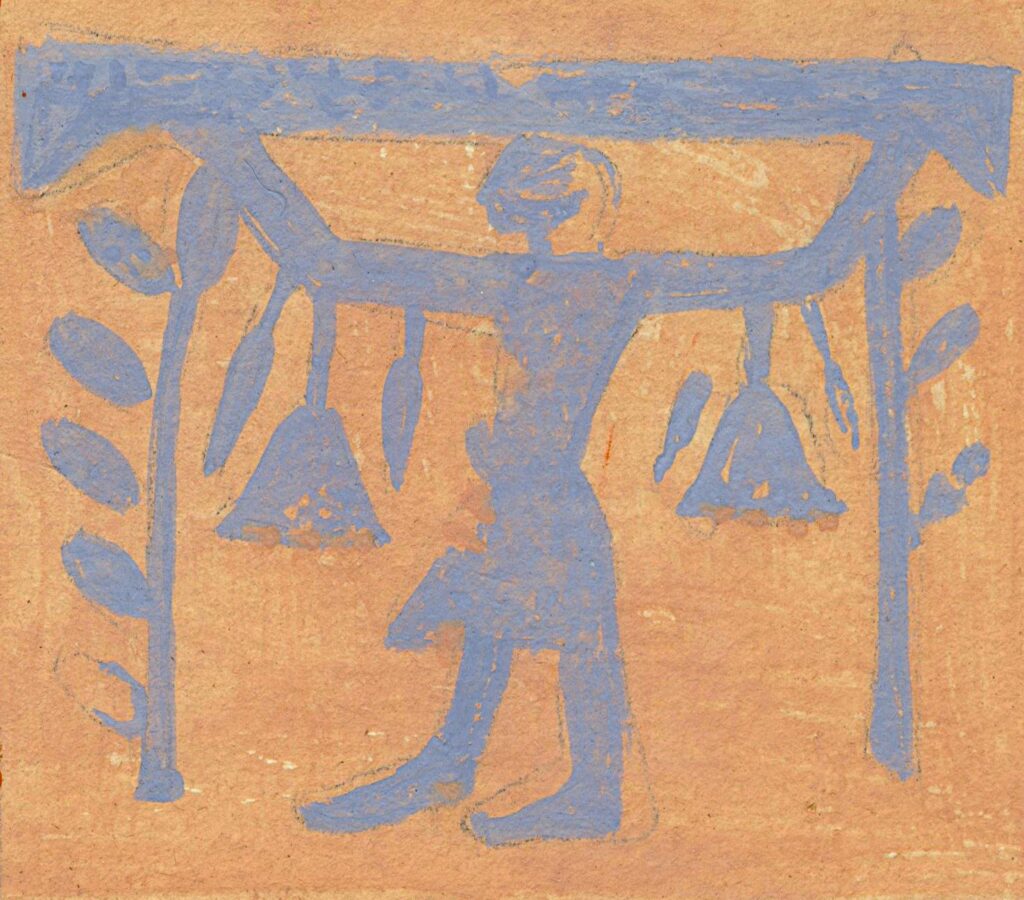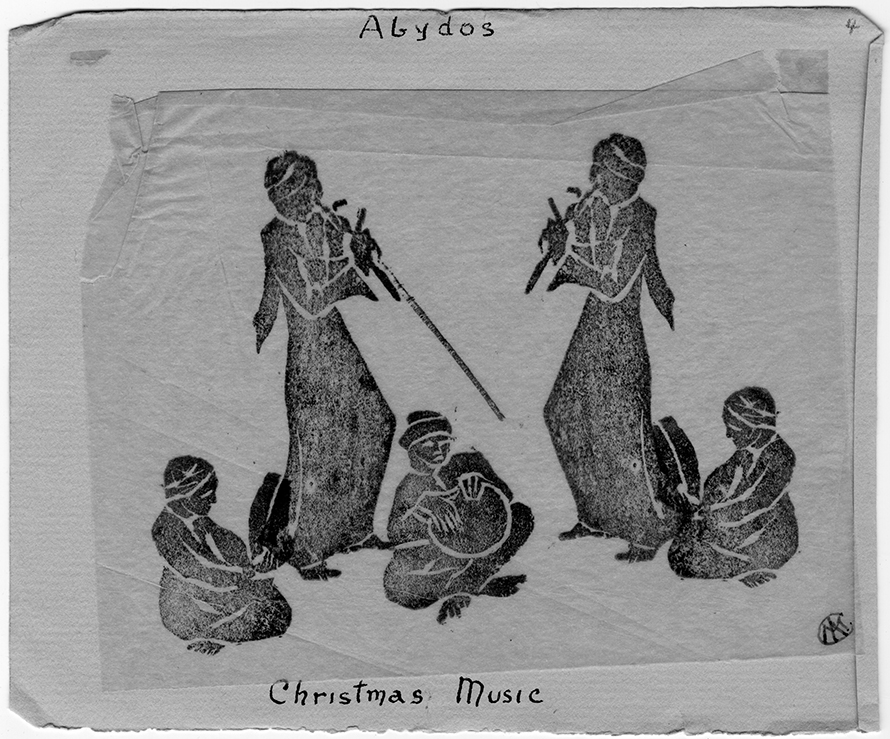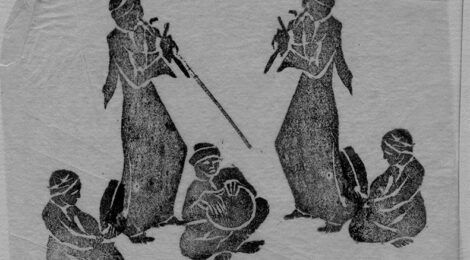
Music – 1 (1929–1933)
Author: Susan Biddle.
This post in the first of two looking at Myrtle Broome’s enjoyment of music, particularly musical entertainment provided by Egyptian musicians in a variety of situations. This post focuses on the music enjoyed at home in Arabah el-Madfunah and in the earlier working seasons.
Myrtle Broome, the daughter of music publisher and cellist Washington Herbert Broome, enjoyed a variety of music. On the voyages out to Egypt at the start of each season, she would listen to the dance band who played on deck in the evenings and during meals. When her ship called at Marseille in October 1929, Myrtle spent an evening with Amice Calverley’s brother Hugh at the Théâtre des Variétés, where they found “an operetta, called ‘Teresá’ … a story of the early life of Bonaparte”. This was probably Die Teresina, a three act operetta by Oscar Straus. Myrtle’s French was not up to following the plot, but she enjoyed the singing and thought the costumes and setting were very good.
Egyptian music however featured much more in Myrtle’s letters home. On her first trip to Egypt in 1927–1928, working with Olga Tufnell at Qau el-Kebir, they had been entertained by a display of horsemanship accompanied by a local band. Myrtle told her parents: “I like the native music very much. It was chiefly drums & pipes, & very tuneful, it made you want to dance”. During her eight seasons at Abydos, she heard much more of it.
On Christmas Eve 1929 she and Amice were delighted to be invited by one of their servants, Ahmud Ibrahim, to attend a wedding festival. She explained to her parents: “As soon as we reached the village we heard the music of the pipes & drums. … The performers squatted on the ground among the guests. The flute player had a zumara with the peculiar drone. It is a delightful instrument heard in the proper surroundings … in such a setting one can appreciate the beauty of the soft clear notes of the zumara with the hum of the drone forming a sort of undertone, & the rhythm of the drum”. Later in the evening came “the star turn, a well known piper & singer, the piper was a Soudanese. He had the Father of zumaras. It was over 5 ft long & had a deep bass hum. It was wonderful to see him blow out his cheeks, never have I seen cheeks extend to such a size, greater even than those of cherubs on tombstones. The singer sang the old Arabian love songs, he held one hand as a shield to his mouth as if to make his voice carry, with the other he pleaded, entreated or emphasised, & he directed his songs to us. … The man was a perfect actor & had a deep rich voice, no wild yells, but beautifully modulated & flexible to a degree; he certainly made the most of his unique opportunity of singing his passionate love songs to two visible & unveiled females who so obviously appreciated his performance”.
Amice and Myrtle would enjoy the music of these players, and the Arab love songs they performed, on many subsequent occasions. The next day they “engaged the piper & the drummer, also the Sudanese piper with the Father of zumaras & the singer” for the evening fantasia. They and the rest of the audience of about 70 locals gathered in circles around three small fires, “& the singer & piper walked backward & forwards among them singing a verse to each in turn, can you imagine it! The squatting figures round the fires, stretching out their hands to the flames. The tall figure of the singer bending over them singing his songs, & the portly Soudanese strutting round with his 5 ft zumara [double clarinet], waving it right & left as he played, sometimes raising it as if he was addressing the stars. When a favourite song was being sung, all the company clapped their hands softly in rhythm, & repeated the refrain after each verse”.
The following March Myrtle sent her father “a picture of the great bass zumara”, telling him: “These instruments are getting very rare. The player is a Soudanese & his cheeks have grown to an enormous size with constant playing, his wind power is marvellous”.
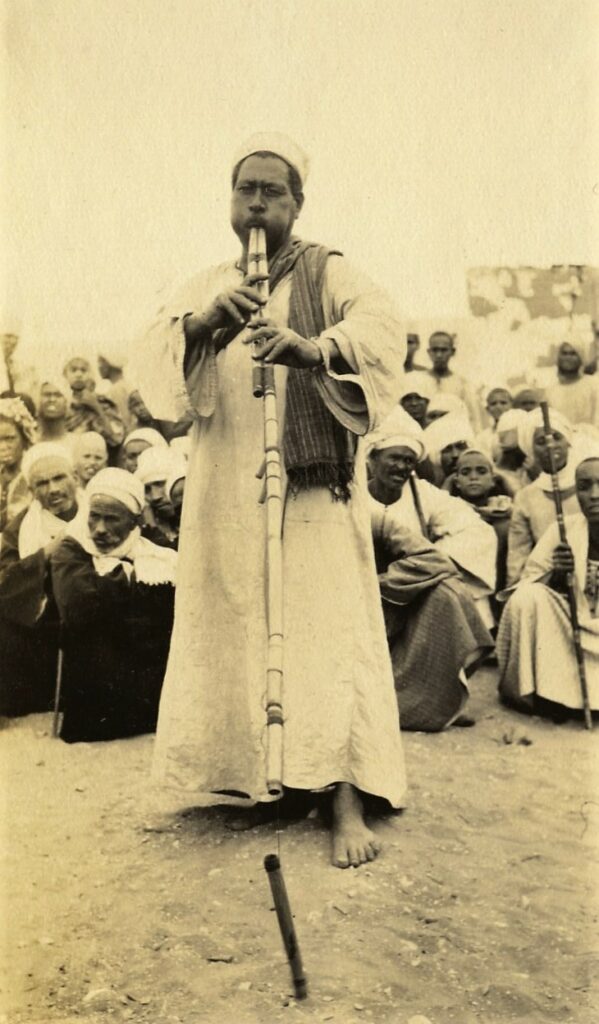
Photograph by Myrtle Broome (1930)
Bushey Museum & Art Gallery
On 25 January 1931 they had another musical evening to entertain Nina de Garis Davies, who was staying with them for a few weeks while copying one of the scenes in the temple. Myrtle explained that “we had the Nubian zumara player & a singer & a drum to entertain us after dinner, we wanted Mrs Davies to hear some of our local music. The drum was very curious. … The frame was made of pottery and the drum was fish skin. It was about 12 to 14 inches across. They warm it over a few blazing sticks to tune it”.
In February 1933, Myrtle told her father about another musical evening when Ahmud Ibrahim brought some travelling musicians to play for them. “There were two long lean rascals with native fiddles … & a small boy with a drum. They squatted down & played & sang the Songs of Abu Zayd – these are ancient traditional songs & the fiddle is always used to accompany them & is never played for any other songs or tunes at all. Abu Zayd is one of the old Arabian heroes & had numerous adventures. The songs about him run into several hundred, & one of them lasted the whole evening so the fiddle is not a neglected instrument although its use is so restricted. They made a most cheerful noise & got an amazing amount of sound out of their instruments. The notes are very full & rich & never squeaky & shrill like European instruments, the small boy just marked the rhythm by tapping the drum with a peculiar little flick of the fingers”.
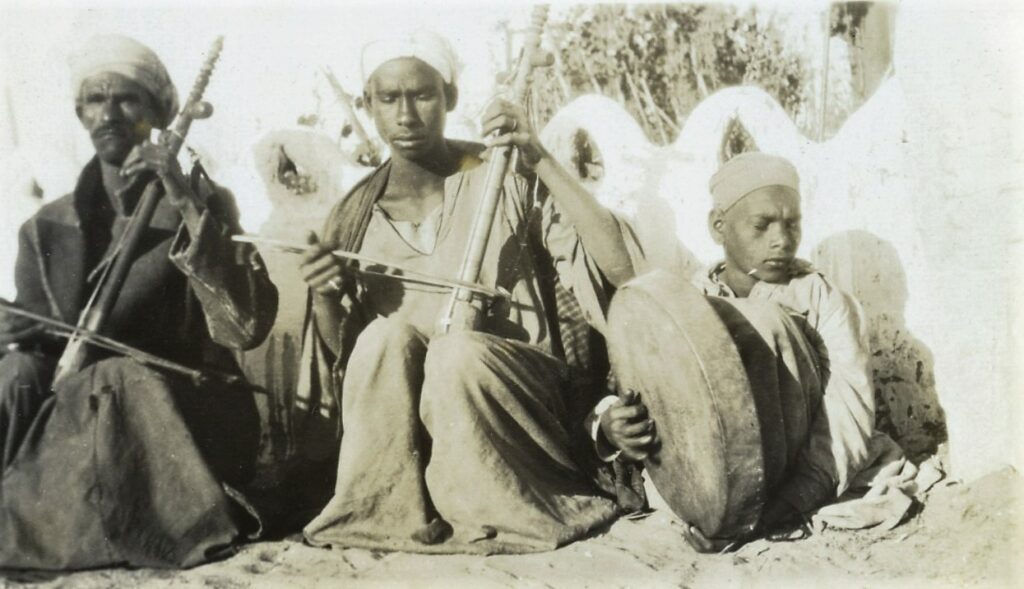
Photograph by Myrtle Broome
Bushey Museum & Art Gallery
From the third season onwards three of the Sudanese Camel Corps – an ombashi [sergeant] and two men – were stationed nearby for the greater security of the Arabah el-Madfunah camp. Over time the soldiers who were repeatedly rotated to this duty became an integral part of the team. In December 1931 Myrtle explained to her mother: “our Ombashi gave us a concert last night on a home-made harp. He had taken a tin dish … & had stretched a bit of skin tightly across it, & fixed in the skin two upright sticks & one across at the top, on this framework he had strung 5 wires. … It made quite a pretty little tinkling tune & he sang a Sudanese song to it”. Unfortunately “he was rather shy and could not be persuaded to give an encore”.
Sources:
Letters: 5, 24, 27, 49, 76, 109, 218, 248, 293, 306A, 344.
Gardiner MSS 43 – Calverley Correspondence, Letter 142.
With thanks to:
- the Griffith Institute, University of Oxford, for the opportunity to work on the Broome collection and the Abydos Enterprise correspondence within the Gardiner collection, and for their ongoing support for this blog
- the Bushey Museum and Art Gallery, for Myrtle Broome’s photographs
- the Artefacts of Excavation project, for information about Qau el Kebir
- Nigel Strudwick and Brown University, for the biographical information on Nina de Garis Davies
- the Operetta Research Centre and Kurt Ganzl (author of The Encyclopaedia of Musical Theatre) for their help in identifying the operetta as Die Teresina
